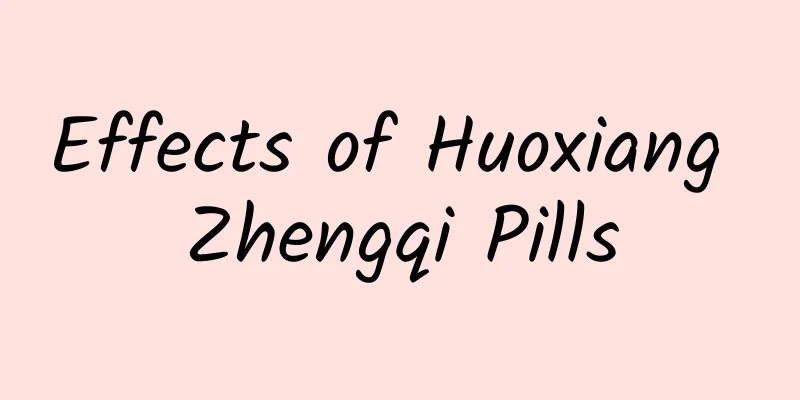The efficacy and function of bird medicine

|
Bird medicine is a traditional Chinese medicine, which is the tuberous root part of Linderae odoratum. Lindera odorata grows in sunny shrub forests, wilderness, etc., generally in the Jiangsu and Zhejiang areas. It is harvested in winter and spring, and after digging, the fibrous roots are removed and the plant is dried. Bird medicine has many effects and functions, including relieving pain, dispelling cold, relieving qi, and relieving depression. Pregnant women and people with weak bodies should not take it. The following is a detailed introduction to bird medicine. Let’s learn about it together~ Lindera scabra is warm in nature and pungent in taste. It enters the lung meridian, spleen meridian, kidney meridian and bladder meridian. [Chinese medicine name] Wuyao. [Alias] Tiantai Wuyao, Taiwu, and Taiwuyao. 【English name】Linderae Radix. [Source] The tuberous root of Lindera aggregata (Sims) Kosterm., a plant of the Lauraceae family. 【Plant morphology】Evergreen shrub or small tree. The roots are woody, swollen and thick, and slightly bead-shaped. The bark is gray-green. The twigs are densely covered with rusty short hairs when young, and smooth and hairless when old; the stems and branches are tough and not easy to break. The leaves are alternate, leathery, elliptical to obovate, acuminate or caudate-acuminate at the apex, rounded or broadly cuneate at the base, entire, green and shiny above, smooth and glabrous except for the midrib, grayish white below, covered with light brown long hairs, then becoming smooth, with three very obvious veins at the base; the petiole is short and pubescent. Umbels are axillary, almost without peduncles; pedicels are hairy, with many florets in clusters; flowers are unisexual, dioecious, and yellow-green; perianth is broadly elliptical, male flowers have 9 stamens arranged in 3 whorls, with glands at the base of the innermost whorl; female flowers have many reduced stamens, superior ovary, spherical, 1-chambered, and 1 ovule. The drupe is nearly spherical, green at first, and turns black when ripe. The flowering period is from March to April, and the fruiting period is from September to October. [Distribution] It grows in shrub forests on sunny hillsides, on the edge of forests, at the foot of mountains, in wilderness, etc. Distributed in Jiangsu, Anhui, Zhejiang and other places. [Harvesting and processing] Harvested in winter and spring; those harvested in early summer have a larger powder content and better quality. After digging, the fibrous roots are removed, the herbs are washed and dried, and the commercial product is called "Wuyaoge". If the cork is scraped off, sliced and dried, it is called "Wuyao tablets". [Properties of the medicinal material] The root is spindle-shaped and slightly curved. Some of the roots are contracted in the middle to form a string of beads, which are called "Wuyao beads". 5~15 cm long. 1~3 cm in diameter. The surface is yellow-brown or gray-brown, with fine longitudinal lines and sparse root marks, some of which have annular cracks. It is extremely hard and not easy to break, and the cross section is brown-white. It has a fragrant aroma, slightly bitter and spicy taste, and a cooling feeling. The tablets of Linderae odorifera are nearly round, 1 to 5 mm thick or thinner, with a cross section that is yellowish-white to light yellow and slightly red, and have radial textures (wood rays) and annular patterns (annual rings). [Nature and flavor and meridians] Warm in nature, spicy in taste. It enters the lung meridian, spleen meridian, kidney meridian and bladder meridian. [Effects and functions] Soothes qi, relieves depression, dispels cold and relieves pain. It is a Qi-regulating medicine. [Clinical Application] The dosage is 3-9 grams; grind into juice or make into pills or powder. It is used to treat chest and abdominal distension and pain caused by qi reversal, indigestion, nausea and vomiting, cold hernia, athlete's foot, frequent urination, etc. 【Main ingredients】Mainly contains volatile oil ingredients. It contains a variety of sesquiterpenoid components, some of which are eucalyptane-derivatives, and some of which are derivatives of rutabaga; in addition, it also contains alkaloids. It has pharmacological effects such as enhancing gastrointestinal activity, relieving pain, stopping bleeding, protecting the liver, antibacterial, anti-asthmatic, and anti-cancer. Its effects of stimulating the central nervous system and improving blood flow are worth studying. [Contraindications] Patients with qi deficiency and internal heat syndrome should not take this medicine. Pregnant women and people with physical weakness should take it with caution. |
<<: The efficacy and function of Sichuan pangolin
>>: The efficacy and function of withered stems
Recommend
The efficacy and function of Lycoris
Traditional Chinese medicine is very effective in...
What to do if venous return is obstructed in the lower limbs
Obstruction of venous return in the lower limbs i...
How to take the "special medicine" when you are infected with influenza B? 10 questions and 10 answers from pharmaceutical experts
Recently, influenza (hereinafter referred to as f...
The delicious but hard to peel Torreya grandis finally "opened"!
In the past two days, at the Torreya grandis plan...
I heard that eating cassava can help you sleep? Don’t! Be careful of poisoning!
"Cassava helps you sleep. You can sleep for ...
Mom is still using plastic bottles to store seasonings? Throw them away!
The five flavors blend to create a hundred flavor...
Is it effective to apply Evodia rutaecarpa on the soles of the feet? What are the effects?
Evodia rutaecarpa is a relatively common weed, bu...
24-hour emergency response | A 5.0-magnitude earthquake occurred in Dafeng District, Yancheng, Jiangsu
Hot News TOP NEWS A 5.0 magnitude earthquake occu...
Ministry of Culture and Tourism: National Star-rated Hotel Statistical Survey in the Third Quarter of 2022
appendix: 1. Statistics of the operating conditio...
The efficacy and function of jujube
Traditional Chinese medicine often has unexpected...
"Tianmo chip" boosts the "acceleration" of intelligence! Another major breakthrough in Tsinghua chip!
Recently, the brain-like computing research team ...
Is the Earth's "Top Stream" about to "collapse"? This time it may be true
In recent years, people have paid more and more a...
When taking care of your kids during the Spring Festival, you must avoid these "pitfalls"! Parents, please take a look
The Spring Festival is here, and the lights and d...
World Pain Relief Day | You don’t have to endure some pain! Let’s learn the truth about “labor analgesia”
As we all know, the pain of childbirth experience...
Contemporary young people grow up and start wearing long johns
In the past, there was a kind of cold called &quo...









